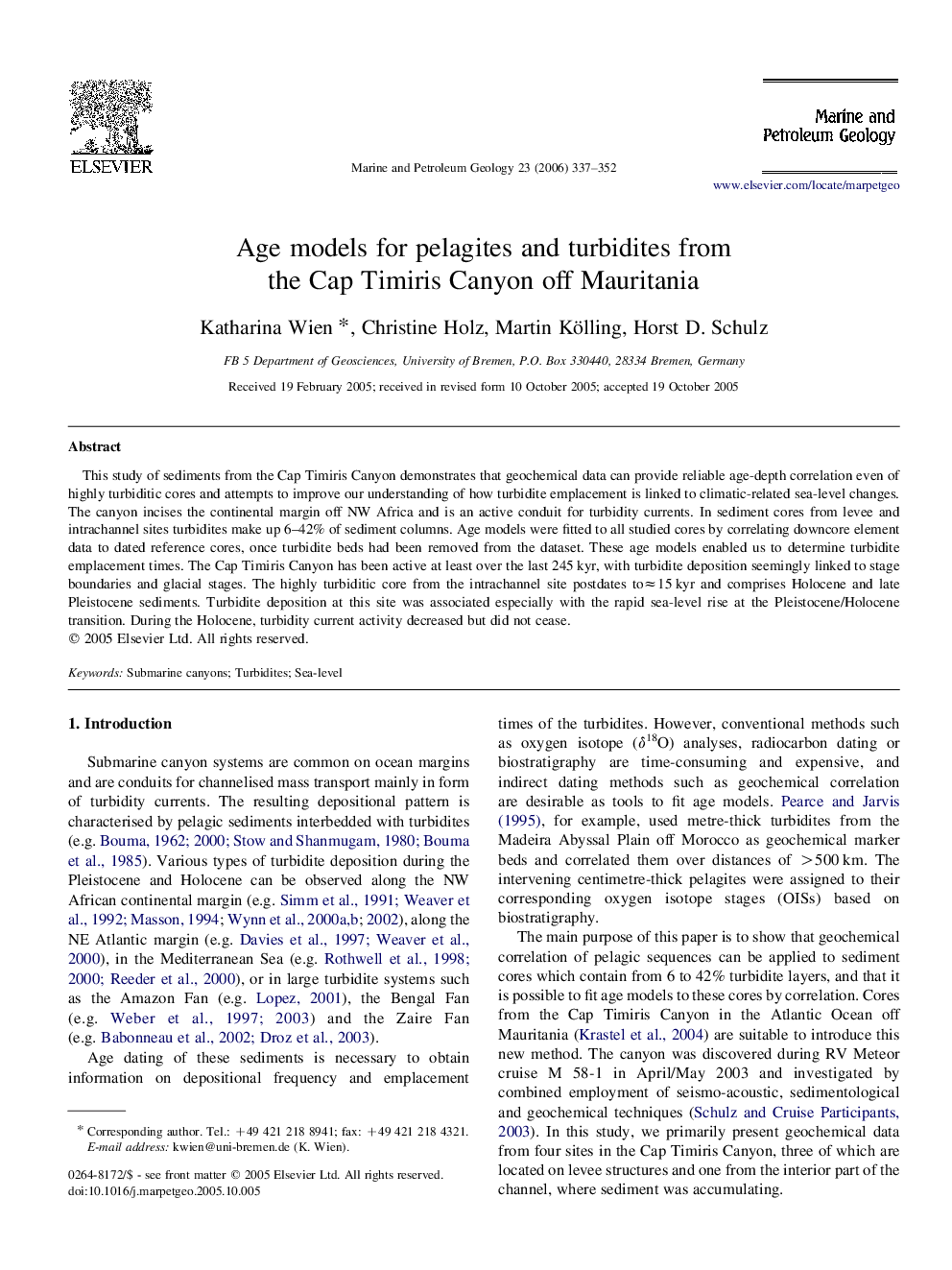| Article ID | Journal | Published Year | Pages | File Type |
|---|---|---|---|---|
| 4696592 | Marine and Petroleum Geology | 2006 | 16 Pages |
This study of sediments from the Cap Timiris Canyon demonstrates that geochemical data can provide reliable age-depth correlation even of highly turbiditic cores and attempts to improve our understanding of how turbidite emplacement is linked to climatic-related sea-level changes. The canyon incises the continental margin off NW Africa and is an active conduit for turbidity currents. In sediment cores from levee and intrachannel sites turbidites make up 6–42% of sediment columns. Age models were fitted to all studied cores by correlating downcore element data to dated reference cores, once turbidite beds had been removed from the dataset. These age models enabled us to determine turbidite emplacement times. The Cap Timiris Canyon has been active at least over the last 245 kyr, with turbidite deposition seemingly linked to stage boundaries and glacial stages. The highly turbiditic core from the intrachannel site postdates to≈15 kyr and comprises Holocene and late Pleistocene sediments. Turbidite deposition at this site was associated especially with the rapid sea-level rise at the Pleistocene/Holocene transition. During the Holocene, turbidity current activity decreased but did not cease.
